Category Archives: Data Science
Elbow Method vs Silhouette Score – Which is Better?
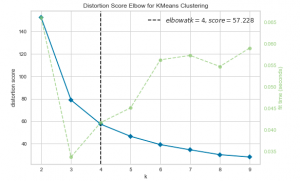
In K-means clustering, elbow method and silhouette analysis or score techniques are used to find the number of clusters in a dataset. The elbow method is used to find the “elbow” point, where adding additional data samples does not change cluster membership much. Silhouette score determines whether there are large gaps between each sample and all other samples within the same cluster or across different clusters. In this post, you will learn about these two different methods to use for finding optimal number of clusters in K-means clustering. Selecting optimal number of clusters is key to applying clustering algorithm to the dataset. As a data scientist, knowing these two techniques to find …
Hello World – Altair Python Install in Jupyter Notebook
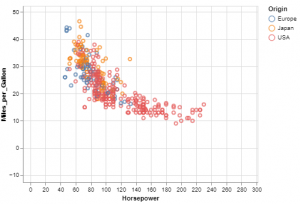
This blog post will walk you through the steps needed to install Altair graphical libraries in Jupyter Notebook. For data scientists, Altair visualization library can prove to very useful. In this blog, we’ll look at how to download and install Altair, as well as some examples of using Altair capabilities for data visualization. What is Altair? Altair is a free statistical visualization library that can be used with python (2 or 3). It provides high-quality interactive graphics via an integrated plotting function ́plot() that produces publication-quality figures in a variety of hardcopy formats and interactive environments across platforms. Altair is also easy to learn, with intuitive commands like ‘plot’, ‘hist’ …
Different types of Machine Learning: Models / Algorithms
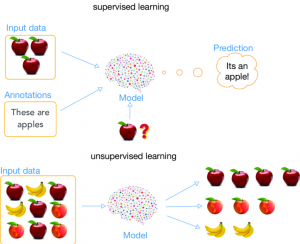
Machine learning is a type of machine intelligence that enables computers to learn and improve without being explicitly programmed. It’s based on the idea that we can build systems which allow our data to do the talking, by finding patterns in vast quantities of information. These machine learning algorithms require different types of machine-learning models trained using different algorithms, depending on what problem they are trying to solve or how accurate an answer needs to be. In this blog post, we will discuss the following four different types of machine learning models / algorithms: Supervised learning Unsupervised learning Semi-supervised learning Reinforcement learning What is supervised learning? Supervised learning is defined …
Free AI / Machine Learning Courses at Alison.com
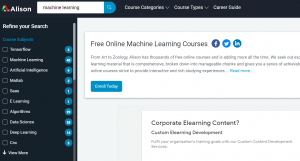
Are you interested in learning about AI / machine learning / data sicence and looking for free online courses? As per MANUELA M. VELOSO, Herbert A. Simon University Professor at CMU,Machine Learning (ML) is a fascinating field of Artificial Intelligence (AI) research and practice where we investigate how computer agents can improve their perception, cognition, and action with experience. Machine Learning is about machines improving from data, knowledge, experience, and interaction. Machine Learning utilizes a variety of techniques to intelligently handle large and complex amounts of information build upon foundations in many disciplines, including statistics, knowledge representation, planning and control, databases, causal inference, computer systems, machine vision, and natural language …
NIT Warangal offers one-week online training on AI, Machine Learning

Are you interested in learning about AI and Machine Learning, or refresing your concepts? NIT Warangal offers one-week online paid training (minimal fees) on AI, Machine Learning. This program is a great opportunity for students to learn about AI & machine learning basics and advanced concepts. It is organized by the Department of Electronics and Communication Engineering & Department of R&D in association with Center of Continuing Education. It will be taught by experience professors who have years of experience in their respective fields. The course will take place between 30th November to 4th December 2021, and it is open to all Faculty/ Research Scholars/Industry professionals/ and other eligible students …
ML Engineer vs Data Scientist: Differences & Similarities
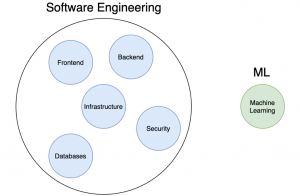
In today’s world, ML (machine learning) engineer and Data scientist are two popular job positions. These positions have a lot of overlap but there are also some key differences to be aware of. In this blog post, we will go over the details of ML engineers vs Data scientists so you can decide which one is right for you! What does an ML engineer do? An ML engineer primarily designs and develops machine learning systems. Before getting into the roles & responsibilities of an ML engineer, let’s understand what is a machine learning system. A machine learning system can be defined as a system that comprises of one or more …
Week Nov1, 2021: Top 3 Machine Learning Tutorial Videos
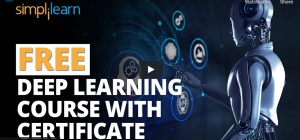
The field of machine learning is a vast topic and it can be hard to know where to start. In this blog post, we’ll cover the top three free tutorial videos on machine learning from YouTube published this week (Week of Nov 1, 2021). These videos will help you get started with the basics of machine learning & deep learning, introduce you to some popular algorithms in use today, and give you an idea of what’s possible when building a model from scratch. Build a Machine Learning Project From Scratch with Python and Scikit-learn Let’s say you want to build a machine learning project from scratch. Maybe you’re not sure …
Support Vector Machine (SVM) Interview Questions

Support Vector Machine (SVM) is a machine learning algorithm that can be used to classify data. SVM does this by maximizing the margin between two classes, where “margin” refers to the distance from both support vectors. SVM has been applied in many areas of computer science and beyond, including medical diagnosis software for tuberculosis detection, fraud detection systems, and more. This blog post consists of quiz comprising of questions and answers on SVM. This is a practice test (objective questions and answers) that can be useful when preparing for interviews. The questions in this and upcoming practice tests could prove to be useful, primarily, for data scientists or machine learning interns/ …
Machine Learning Examples from Daily Life
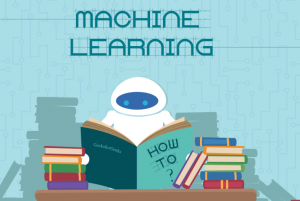
Machine learning is a powerful machine intelligence technique that can be used in a variety of settings to generate data insights. In this blog post, we will explore real-world or real-life machine learning / deep learning / AI examples from daily life. We’ll see how machine-learning techniques have been successfully applied to solve real-life problems. The idea is to make you aware of how machine learning and data science applications are everywhere. What are some real-world examples of machine learning from daily life? Here are some real-world examples of machine learning that we use in our daily life: Best driving directions (Google Maps): A bunch of machine learning / deep …
8 Months Data Science Program from IIT Chennai
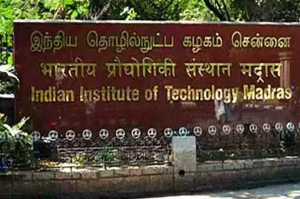
Are you looking for a new job or build your career in the field of data science? Data science is the hottest career in India right now. It is one of the most sought after skills today. It’s not just about crunching numbers anymore – it’s an exciting, dynamic field that requires creativity and critical thinking. With data science, you can solve problems and make a real impact on society. And with IIT Madras offering diplomas in data science, there has never been a better time to get started! IIT Madras has launched its diploma program in Data Science for college students, working professionals and job seekers who aim to …
Stock Price Prediction using Machine Learning Techniques
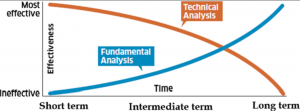
In the past few decades, many advances have been made in the field of data analytics. Researchers are now able to predict stock prices with higher accuracy due to analytical predictive models. These predictive techniques utilize data from previous stock price movements and look for patterns that could indicate future stock price changes in the market. The use of these machine learning techniques will allow investors to make better decisions and invest more wisely by maximizing their returns and minimizing their losses. In this blog post, you will learn about some of the popular machine learning techniques in relation to making stock price movement (direction of stock price) predictions and …
Data Readiness Levels Assessment: Concepts

Data readiness levels (DRLs) and related assessments are an important part of data analytics. Data readiness levels is a concept where different stages represent the quality and maturity of data. Data science is becoming increasingly popular, but not all companies have the right level of data readiness for this type of work. Performing data readiness levels assessment is important because it gives an insight into the quality and quantity of your current datasets and helps determine future success of the data analytics project. This blog post will explain what data readiness levels are and why assessment tests are important in relation to them. What are data readiness levels? Data readiness …
Data Science / AI Team Structure – Roles & Responsibilities
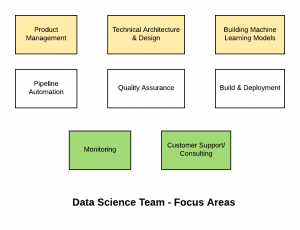
Setting up a successful artificial intelligence (AI) / data science or advanced analytics practice or center of excellence (CoE) is key to success of AI in your organization. In order to setup a successful data science COE, setting up a well-organized data science team with clearly defined roles & responsibilities is the key. Are you planning to set up the AI or data science team in your organization, and hence, looking for some ideas around data science team structure and related roles and responsibilities? In this post, you will learn about some of the following aspects related to the building data science/machine learning team. Focus areas Roles & responsibilities Data Science Team – Focus …
Clinical Trials & Predictive Analytics Use Cases
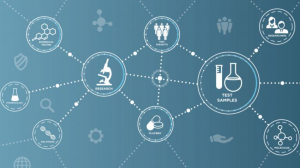
Analytics plays a big role in modeling clinical trials and predictive analytics is one such technique that has been embraced by clinical researchers. Machine learning algorithms can be applied at various stages in the drug discovery process – from early compound selection to clinical trial simulation. Data scientists have been applying machine learning algorithms to clinical trial data in order to identify predictive patterns and correlations between clinical outcomes, patient demographics, drug response phenotypes, medical history, and genetic information. Predictive analytics has the potential to enhance clinical research by helping accelerate clinical trials through predictive modeling of clinical outcome probability for better treatment decisions with reduced clinical trial costs. In …
Local & Global Minima Explained with Examples
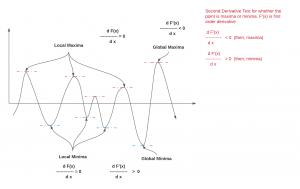
Optimization problems containing many local minima remains a critical problem in a variety of domains, including operations research, informatics, and material design. Efficient global optimization remains a problem of general research interest, with applications to a range of fields including operations design, network analysis, and bioinformatics. Within the fields of chemical physics and material design, efficient global optimization is particularly important for finding low potential energy configurations of isolated groups of atoms (clusters) and periodic systems (crystals). In case of Machine learning (ML) algorithms, theer is a need for optimising (minimising) the cost or loss function. In order to become very good at finding solutions to optimisation problems (relating to minimising …
Building Machine Learning Models & Dev Challenges

The machine learning models and AI implementation industry is booming. The demand for machine learning models has never been higher, but the challenges of machine learning development and deployment have also increased. In this post, we will discuss a few common machine learning development and deployment challenges. In future blogs, we will learn about solutions to overcome these challenges. This blog post will help you learn and understand some of the key challenges that you may face if you are planning to start machine learning practice in your organization. These challenges are also very much relevant if you have machine learning engineers and data scientists working across different offices/locations on …
I found it very helpful. However the differences are not too understandable for me